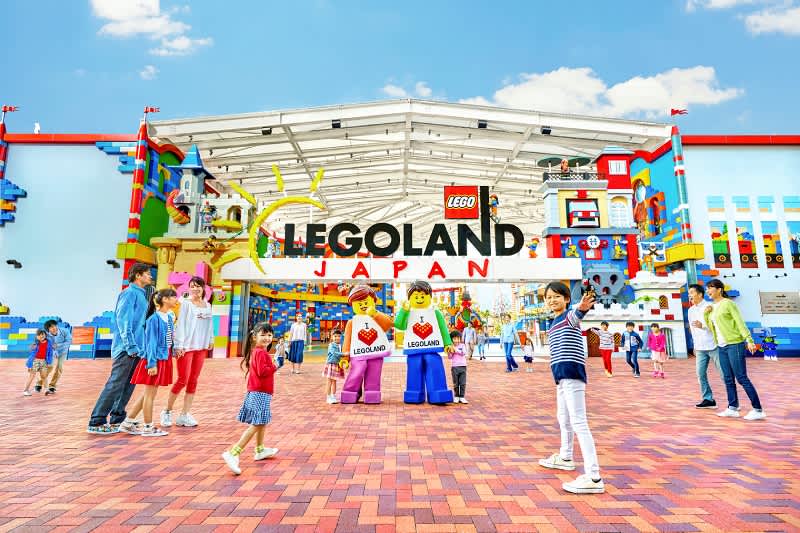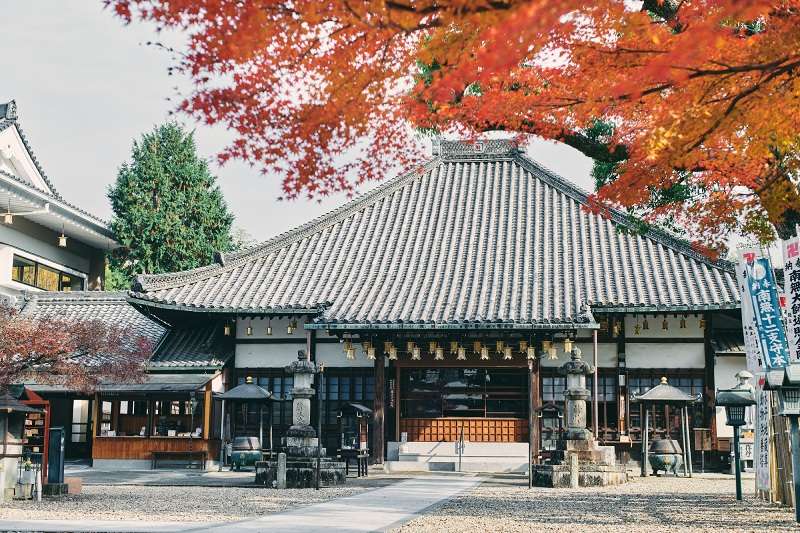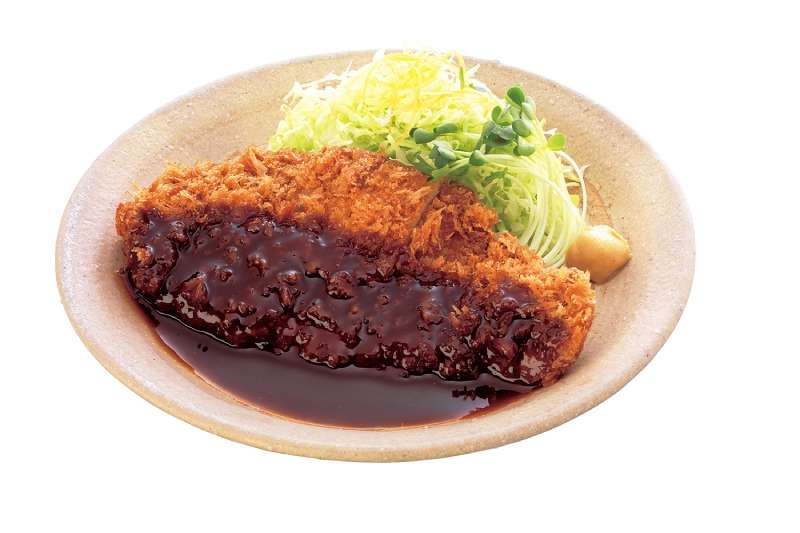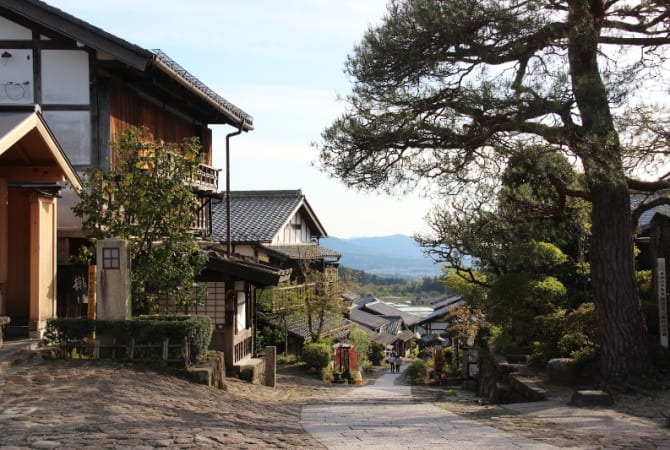Navigating Nagoya In 3 Days: Exploring The City's Cultural Gems And Modern Attractions
Nagoya is a haven of historical tales, cultural wonders, and commercial activity. This highly urbanized and principal city of the Chūkyō metropolitan area has a wealth of experiences for heritage buffs, nature admirers, lovers of modern living, and foodies. Picking places to visit in Nagoya can be overwhelming given the many exciting attractions. So, we’ve put together a three-day itinerary that covers many of the notable sites in the capital city of Aichi Prefecture.
Day 1: Exploring Nagoya's Rich Culture and Heritage
A good way to start your first day in Nagoya is to explore its captivating cultural attractions and rich heritage. Then, visit the famous Osu Shopping District where you can shop for affordable clothes and cap your day with a side trip to taste its local cuisine, a.k.a. ‘Nagoya meshi’.
A. Visit and be in awe of the timeless beauty of Nagoya Castle

© Nagoya Convention & Visitors Bureau
Nagoya Castle comprises a 400-year-old complex that is one of the early modern castles in the city. The castle was built in the early 1600s by Tokugawa Ieyasu, the founder and first shogun of the Tokugawa shogunate (1603-1867, also known as the Edo period). The main Tower Keep features an expansive floor space, and the ends of its highest ridge are bedecked with two golden shachihoko, an imaginary creature with a tiger’s head, and the body of a fish.
The Hommaru Palace, just adjacent to the main tower keep, served as the government office of the Owari Domain, the first branch of the three Tokugawa clan lineages, and the lodging for the shogun during this period. With its undeniable historical and political significance, Nagoya Castle became the first castle in Japan to be given a Former National Treasure designation.
Nagoya Castle (Website)
Address: 1-1 Hommaru, Naka Ward, Nagoya City, Aichi Prefecture 460-0031
Access: From Nagoya Station, take the train to either Nagoyajo Station or Sengencho Station.
Operating Hours: Monday to Sunday, 9:00 AM to 4:30 PM. (Entrance to the Hommaru Palace and Nishinomaru Okura Museum is until 4:00 PM only.)
Admission: Adult: JPY500; Children under Junior High School: Free
※The Main Tower Keep is currently closed due to earthquake resistance concerns.
B. Experience Arimatsu-Narumi Shibori, a traditional tie-dyeing technique in the town of Arimatsu

Photo Credit: Arimatsu-Narumi Tie-Dyeing Museum
If you want to know what it was like during Japan’s Edo period (1603-1868), a visit to Arimatsu will satisfy your curiosity. This town, located along the historic Tokai route in the Midori Ward of south-eastern Nagoya, preserves the era's aura with its traditional structures, including houses and shops.
Another attribute that imbues the townscape with character is its traditional tie-dyeing technique called Arimatsu-Narumi shibori, which you can also try by visiting the Arimatsu-Narumi Tie-Dyeing Museum. It is a laborious shibori (tie-dying) method that brings a sophisticated process into a longstanding Japanese tradition. In the workshop, you will be taught to use the squeezing method to tie-dye handkerchiefs, hand towels, T-shirts, and table centers for a fee of JPY1,800 to JPY5,500, depending on your medium. The course will last an hour or two.
Arimatsu-Narumi Tie-Dyeing Museum (Website)
Address: 3008 Arimatsu, Midori Ward, Nagoya City, Aichi Prefecture 458-0924
Access: Take a 30-minute ride from Meitetsu Nagoya Station to Arimatsu Station, then a three-minute walk to the museum.
Operating Hours: Monday to Sunday, 9:30 AM to 5:00 PM.
Admission: Adult: JPY300; Children: JPY100
※Reservation for the workshops is required and the fee for the materials is separate.
C. Cap off your first day at Osu Shopping District

© Nagoya Convention & Visitors Bureau
Osu Shopping District is a premier shopping destination in the neighborhood of Osu in Nagoya. It comprises eight streets accommodating multiple shopping arcades that house around 1,200 shops, restaurants, and cafés. All sorts of products are sold in the district, including electronic devices and appliances, brand-new and thrifted clothes, souvenirs, and novelty items, just to name a few.
To cap off your shopping in Osu and your first day in Nagoya, head to a restaurant or food shop that serves Nagoya’s signature eel dish, Hitsumabushi. This sumptuous cuisine is made of thinly sliced eel, or unagi, grilled in kabayaki style and laid on top of rice. What sets this dish apart from the ordinary unaju or unagi-don is the way it’s eaten. Often, it’s divided into four portions – the first portion is eaten as is, the second is paired with condiments such as nori seaweed, the third portion is the same as the second but with the addition of dashi broth, then the last one would be to eat it however you like.
You May Also Like
Osu Shopping District (Website)
Address: 2-chome and 3-chome Osu, Naka Ward, Nagoya City, Aichi Prefecture 460-0011
Access: From Nagoya Station, take the Higashiyama Subway Line to Fushimi Station. Then, take the Tsurumai line to Osu Kannon Station. From there you can walk to the shopping district.
Day 2: Experience the Thriving Urban Life in Nagoya
After exploring and admiring the beauty of Nagoya’s cultural landscapes, start your second day by trying the Nagoya-style breakfast called the “Morning Service” or simply “Morning”. Then, reconnect with your inner child at Legoland Japan, and end your day with a relaxing view of the Shirotori Garden.
A. Try the famous Nagoya “Morning Service”

If you believe that the best things in life are free, you’ll have an affirming experience with Nagoya’s “Morning Service,” where in some kissatens or cafés, you are treated to a free meal when you order a coffee to start your day. The accompanying breakfast is often a slice of toast, a boiled egg, and other sides that vary depending on the store and area. Some stores also offer Ogura Toast, which is toast filled with sweet red bean paste.
The Nagoya Morning Service, despite its name, didn’t originate in the city, but likely in Ichinomiya or Toyohashi in Aichi Prefecture. It is said that in the 1950s, business owners would hold their meetings at cafés, away from the grinding noise of their factories. As these meetings became more common, café owners started offering free breakfasts to their growing clientele as a gesture of gratitude.
B. Unleash your inner child at LEGOLAND® Japan Resort

Reconnect with your inner child and visit LEGOLAND® Japan Resort, located just 30 minutes away from the city center. Spanning 9 hectares, it is the first LEGO® theme park in Japan, the second in Asia (after Malaysia’s), and the eighth in the world.
The theme park, opened in 2017, has over 40 attractions and uses around 17 million LEGO® blocks. These attractions include Miniland, where you can find LEGO® replicas of popular Japanese tourist sites in places like Nagoya, Tokyo, Kyoto, and Osaka. Another feature that kids and kids at heart can enjoy is the LEGO® Factory Tour where you can get a glimpse of how these pieces are made and take home a newly made one as a souvenir. Rides are also available in the theme park such as the Knight Kingdom’s rollercoaster ride called The Dragon, Pirate Shores’ Anchors Away, and Splash Battle.
You can also visit and meet various sea creatures and dive into the underwater world of SEA LIFE Nagoya, an aquarium just adjacent to LEGOLAND® Japan.
LEGOLAND® Japan Resort (Website)
Address: 2-2-1 Kinjou-futo, Minato Ward, Nagoya City, Aichi Prefecture 455-8605
Access: From Nagoya Station, take the Aonami line for 25 minutes to Kinjou-futo Station. The park is about a 10-minute walk from there.
Operating Hours: Monday to Friday, 10:00 AM to 4:00 PM; Saturday, Sunday, and Public Holidays, 10:00 AM to 6:00 PM
Admission: LEGOLAND® Japan 1 Day Pass: Adult: From JPY4,500~; Children (3-18 years old): From JPY3,300~. Please check the website for more details and other passes.
C. Relax in the breathtaking view of Shirotori Garden

Photo Credit: Shirotori Garden
After an action-filled second day, wind down in Shirotori Garden, a traditional Japanese garden in Nagoya’s Atsuta Ward. Its name, “shirotori”, comes from the local area while the areas around are based on the topography of the Tokai region. The garden’s main pond is Ise Bay, while the mound in the southwestern corner is the garden’s Mt. Ontake, with the water flowing from it representing the Kiso River.
During autumn, the garden is covered in red, yellow, and gold color palettes courtesy of the trees’ leaves. Moreover, from November to February, you can enjoy the stunning view of the cone-shaped structures called “Yukitsuri”, built from ropes to protect the pine trees from heavy snowfall. The illuminated “Yukitsuri” is the most anticipated special sight that's only available for viewing on weekends, starting November 16 to December 1, and this 2024, the opening hours will also be extended until 8:00 PM.
Shirotori Garden (Website)
Address: 2-5 Atsuta Nishimachi, Atsuta Ward, Nagoya City, Aichi Prefecture, 456-0036
Access: From Chubu Centrair International Airport Station, take the Meitetsu-Limited Express Line to Kanayama Station. Transfer to the Meijo Subway Line (left circle) to the Atsuta Jinguninisi Station
Operating Hours: Monday (closed), Tuesday to Sunday, 9:00 AM to 5:00 PM.
Admission: Adult: JPY300; Children: Free; Seniors: JPY100
Day 3: Go on a Laid-Back Adventure to End Your Tour
For your third day in Nagoya and the last day of the itinerary, you can go on a laid-back adventure around the city and munch on its famous dishes.
A. Explore the Higashiyama Zoo and Botanical Gardens

© Nagoya Convention & Visitors Bureau
An entire day is not enough to explore the Higashiyama Zoo and Botanical Gardens, but you’ll still come away with a feeling of glee from what you’ll manage to see and experience. This 60-hectare land is home to around 450 animal varieties and approximately 7,000 plant types. With such diversity, it’s little wonder that it is the second most visited zoo in Japan.
Among its inhabitants is the silverback gorilla Shabani, who caught global attention in 2015 for his “handsome looks”. The zoo also has elephants, koalas, giraffes, lions, red pandas, and different kinds of fish, to name a few. The botanical garden, one of the largest in Asia, incorporates the surrounding forest. It also features Japan’s oldest public greenhouse, and is a sight to behold all-year-around.
Higashiyama Zoo and Botanical Gardens (Website)
Address: 3-70 Higashiyama Motomachi, Chikusa Ward, Nagoya City, Aichi Prefecture 464-0804
Access: From Nagoya Station, take the Higashiyama Subway Line to Higashiyama Koen Station. From there you can take a 2-minute walk to the zoo and gardens.
Operating Hours: Monday (closed), Tuesday to Sunday, 9:00 AM to 4:50 PM.
Admission: Adult: JPY500; Children: Free
B. Marvel at the scenic and cultural properties of Yagotosan Koushoji Temple

Photo Credit: Yagotosan Koushoji Temple
Yagotosan Koushoji Temple is a Shingon Buddhist temple located in Nagoya’s Showa Ward. This magnificent complex surrounded by trees was built in 1688 on the orders of the Buddhist priest Tenzui Ensho. Some structures from the Edo period still stand within the complex. But perhaps the most striking of them all is the wooden five-story pagoda, which was built in 1808 and now holds the distinction of being one of Japan’s Important Cultural Properties.
Though a place of prayer, the temple is also the venue for Koushoji Marche, or the Koushoji Temple Market, held every 21st of the month. On this day, merchants gather to sell food, crafts, and more.
Yagotosan Koushoji Temple (Website)
Address: 78, Yagotohommachi, Showa Ward, Nagoya City, Aichi Prefecture, 466-0825
Access: From Nagoya Station, take the Higashiyama Line first, then switch to the Tsurumai Subway Line, and alight at Yagoto Station. From there, the temple is three minutes by foot.
Operating Hours: Monday to Sunday, 8:00 AM to 5:00 PM.
C. Treat your taste buds to one of the best Nagoya Meshi, the Miso Katsu

© Nagoya Convention & Visitors Bureau
A fitting way to end your tour of Nagoya is to have a celebratory dinner of another of the city’s specialties, miso katsu. This dish is a type of katsu, or breaded and deep-fried meat or vegetable, that’s distinguished by its sauce, hacho miso, which is made of 100% soybeans with a reddish brown color. A variant of this Nagoya favorite is miso kushikatsu, where the breaded meat or vegetable is skewered.
You’ll be sure to leave with lasting beautiful memories after experiencing these wonderful places and things in the vibrant city of Nagoya in Aichi Prefecture.
Discover more of Japan. Follow us on Facebook and Instagram for fun facts and quick tips about Japan.


















































